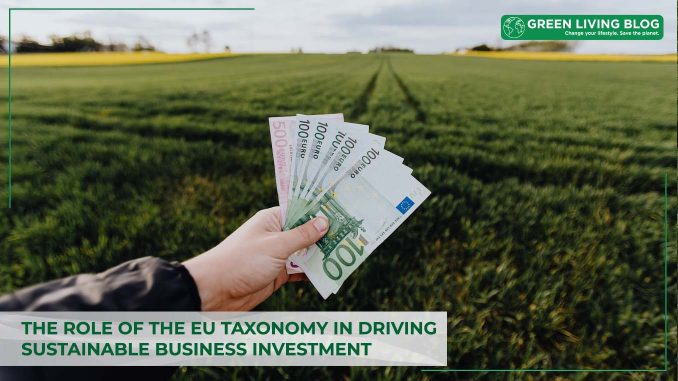
Thinking about a green transition has become more pertinent since the EU taxonomy framework was published, promoting the acceleration of sustainable finance to meet European Green Deal objectives.
An ESG reporting software could be the key to unlocking your potential as a business when looking at how to drive sustainability and build a greener, forward-thinking company ethos moving forward.
What is the EU Taxonomy?
The EU Taxonomy was published as one of the core pillars of the Action Plan for Sustainable Finance that the EU has used to call for a transition of capital flow towards sustainable investment.

It is designed to support the entire economy of the EU to meet the objectives set out by the European Green Deal, including the big-hitting target of climate neutrality by the year 2050. The regulation is a classification tool that helps policymakers, companies, and capital markets to have clarity when looking at economic activities and future investments.
There has been a problem with potential greenwashing from companies and industries in recent years, and the Taxonomy is aimed at addressing this. The idea is to allow for a process where those who wish to identify and invest in sustainable assets can do so with greater confidence that it is a genuine pursuit and not just a greenwashing venture. There are also obligations that must be met by financial market participants.
What is a sustainable economic activity?

The definition of a sustainable economic activity is important to the entire Taxonomy Regulation. There are two criteria that activity must fulfill to meet this:
- It must contribute to at least one of six environmental objectives; climate change mitigation; climate change adaptation; sustainable use and protection of water and marine resources; transition to a circular economy; pollution prevention and control; protection and restoration of biodiversity and ecosystems.
- It must not do any significant harm to the other objectives.
- The economic activity must meet all ‘minimum safeguards’ in relation to the UN Guiding Principles on Business and Human Rights.
- It must comply with the technical screening criteria that have been developed by the EU Technical Expert Group.
There are some thresholds in place to ensure that an activity does not cause significant harm to any of the other Taxonomy objectives. These ‘Do No Significant Harm’ thresholds are important to the entire process.
What are enabling and transitional activities?

The Taxonomy also sets out a definition for two classification categories relating to activities that contribute significantly to one or more environmental objectives.
What is Enabling activities?
This relates to activities that may not promote sustainability in themselves but that are in place to allow other activities to make a bigger contribution to one or more of the six objectives set out by the Taxonomy. There is a determination to ensure that any enabling activity does not become a long-term asset that undermines the environmental goals that are being aimed for by the other objectives – they must also have a positive impact over the course of the activity’s cycle.
What are transitional activities?
A transitional activity is one that contributes to the pathway of meeting climate change goals in line with the Paris Agreement. An activity qualifies as a transitional activity when:
- There are no low-carbon alternatives at a feasible cost.
- It does not lead to a carbon lock-in or make the development and deployment of low-carbon alternatives difficult.
- Emission levels correspond to the best performance within the sector.
What is the future of the Taxonomy?

There are different ways in which the Taxonomy could be applied in the future, as it has been set out as the standard benchmark for eligibility when it comes to EU practices and the promotion of net neutrality by 2050. It could be that a greater breadth of EU policy measures across multiple sectors in the future is tied to the Taxonomy as the EU looks at all aspects of economic life to ensure a greener, sustainable future.
Making that green transition is not always straightforward, and finding assistance through specialist companies that can guide you through the right processes and implement correct ESG reporting software processes will help you get to where you want to be.
Utilising data to identify potential future threats to sustainability helps your organisation to plan carefully and to achieve clear sustainability objectives to meet a green transition that adheres to the EU Taxonomy pathway to carbon neutrality by 2050.
It always helps to have expertise on your side when making such big changes to your company investments and internal processes. Accurate, up-to-date information and data help to shape and evolve your transition path to maximise its potential.
![]()
Author Profile
- Online Media & PR Strategist
- Blogger and Educator by Passion | Senior Online Media & PR Strategist at ClickDo Ltd. | Fascinated to Write Lifestyle Blogs in News & Education I have completed a journalism summer course at the London School of Journalism and manage various blogs.
Latest entries
 Green Expert GuidesMarch 28, 2025Lisbon Living: Where Sustainable Charm Meets Urban Energy
Green Expert GuidesMarch 28, 2025Lisbon Living: Where Sustainable Charm Meets Urban Energy EnvironmentJanuary 21, 2025Buying Eco-Friendly Homes: 6 Eco Questions to Ask Your Real Estate Agent
EnvironmentJanuary 21, 2025Buying Eco-Friendly Homes: 6 Eco Questions to Ask Your Real Estate Agent BusinessJanuary 16, 202510 Benefits of used Office Furniture when Refurbishing an Office
BusinessJanuary 16, 202510 Benefits of used Office Furniture when Refurbishing an Office Best practicesJanuary 6, 2025Eco-Friendly Event Planning: Mastering Sustainable Waste Management for Holiday Celebrations
Best practicesJanuary 6, 2025Eco-Friendly Event Planning: Mastering Sustainable Waste Management for Holiday Celebrations






Leave a Reply
You must be logged in to post a comment.